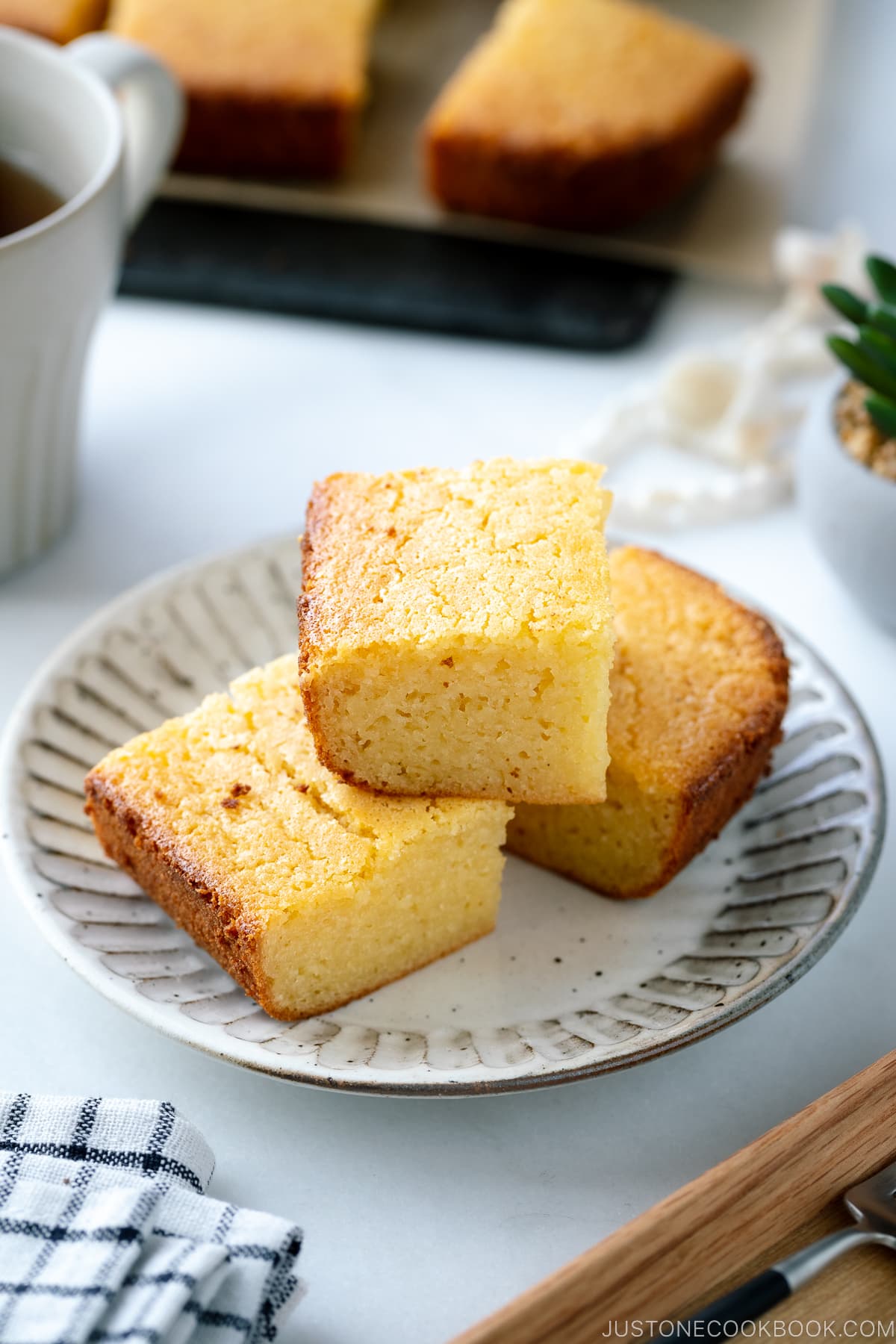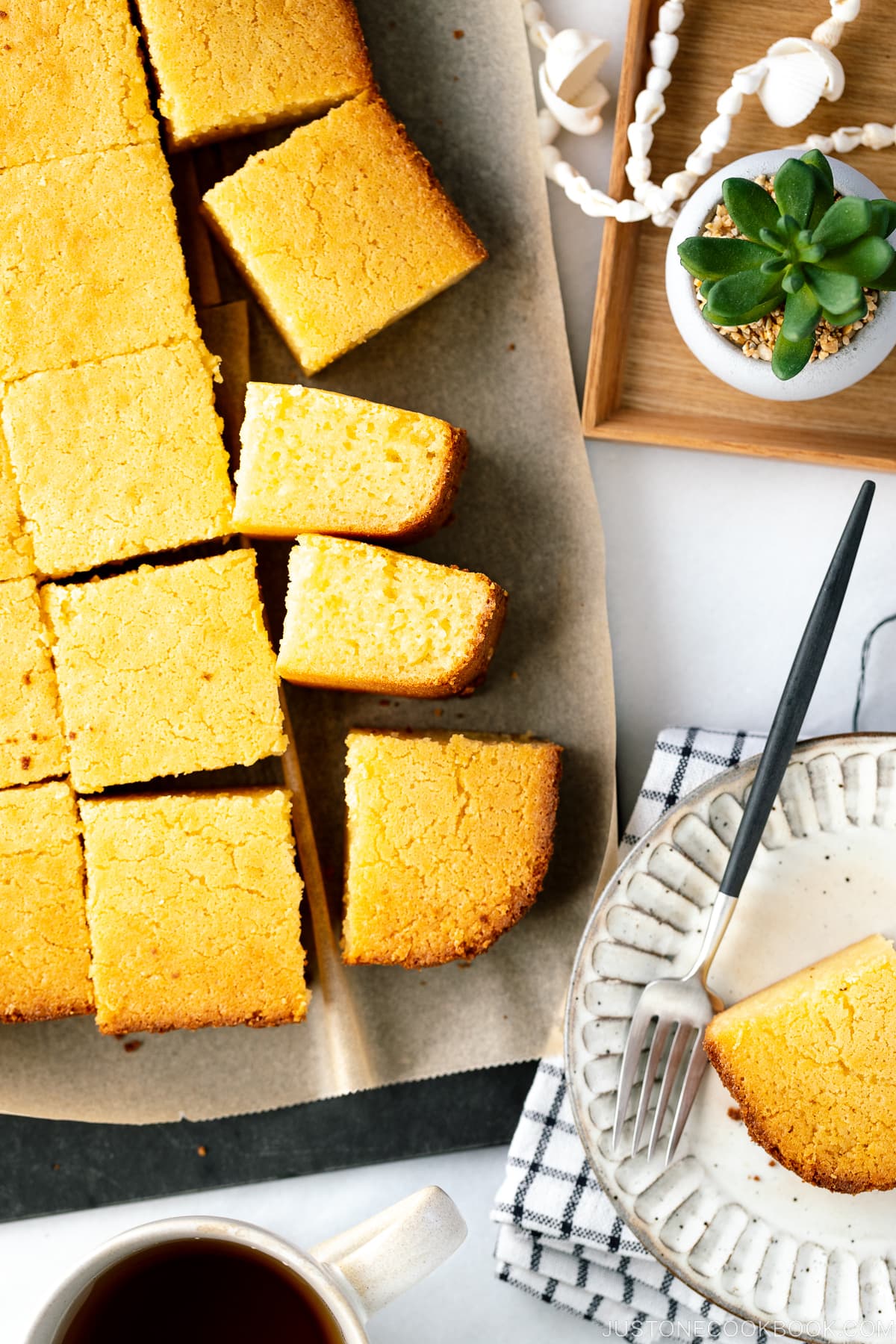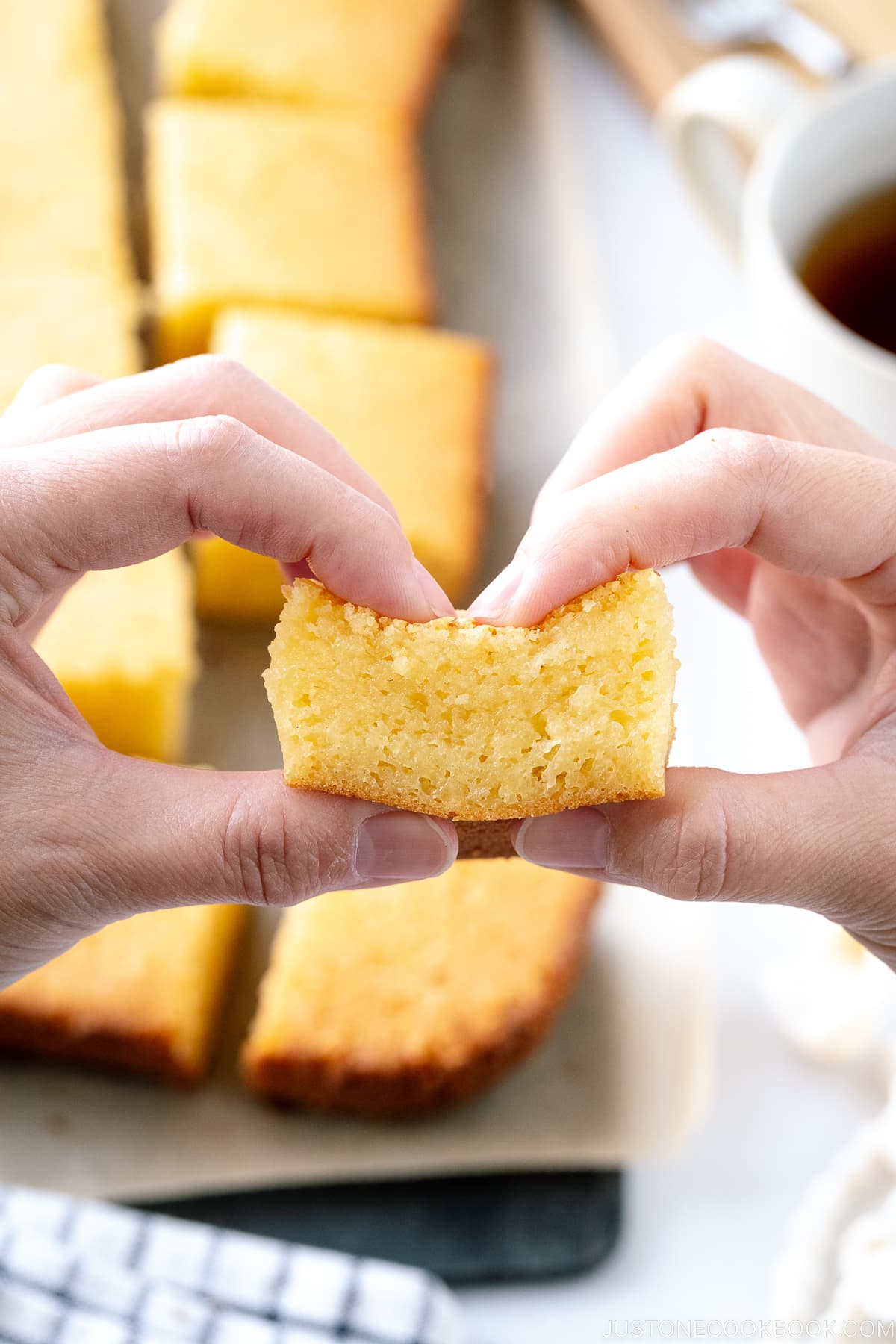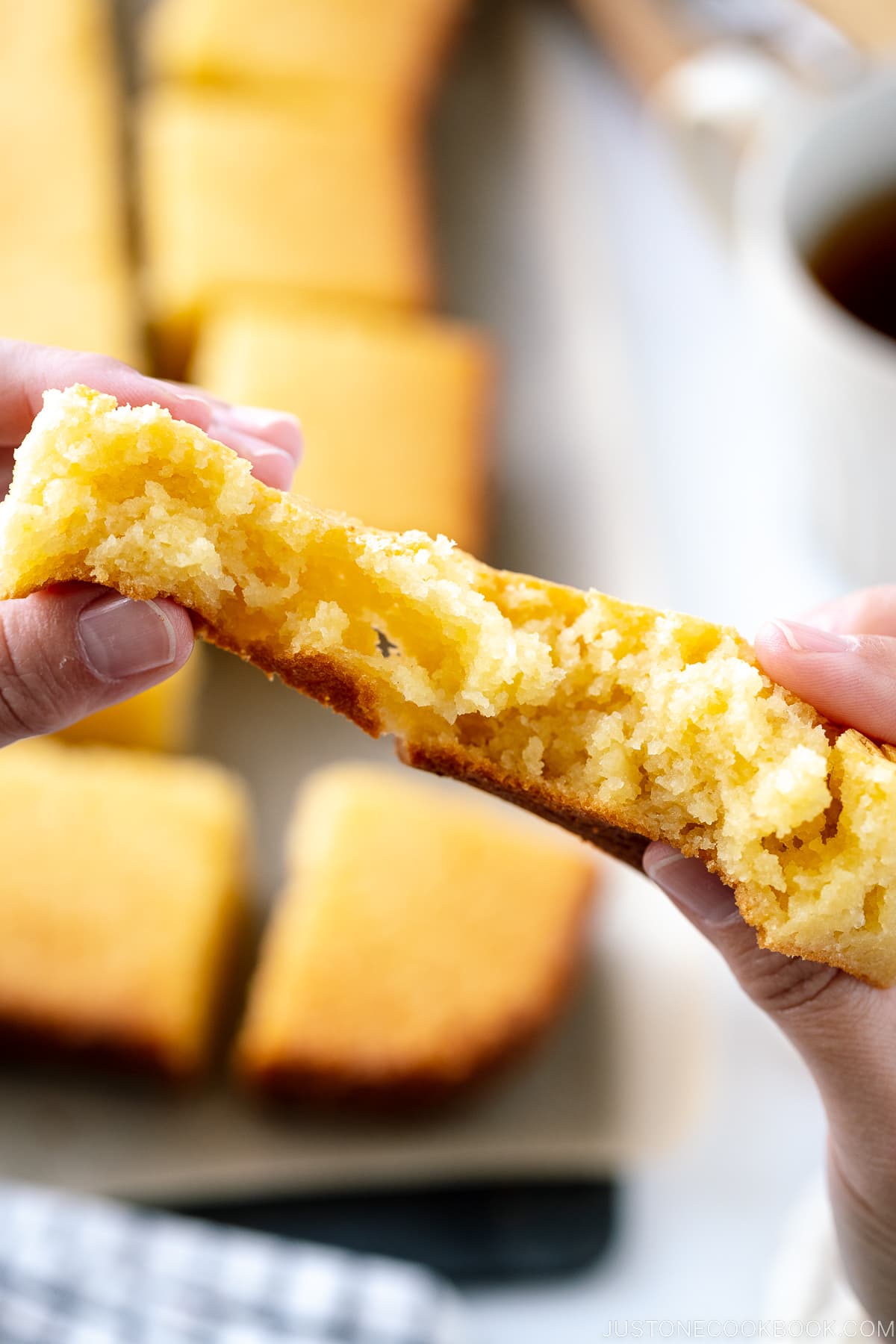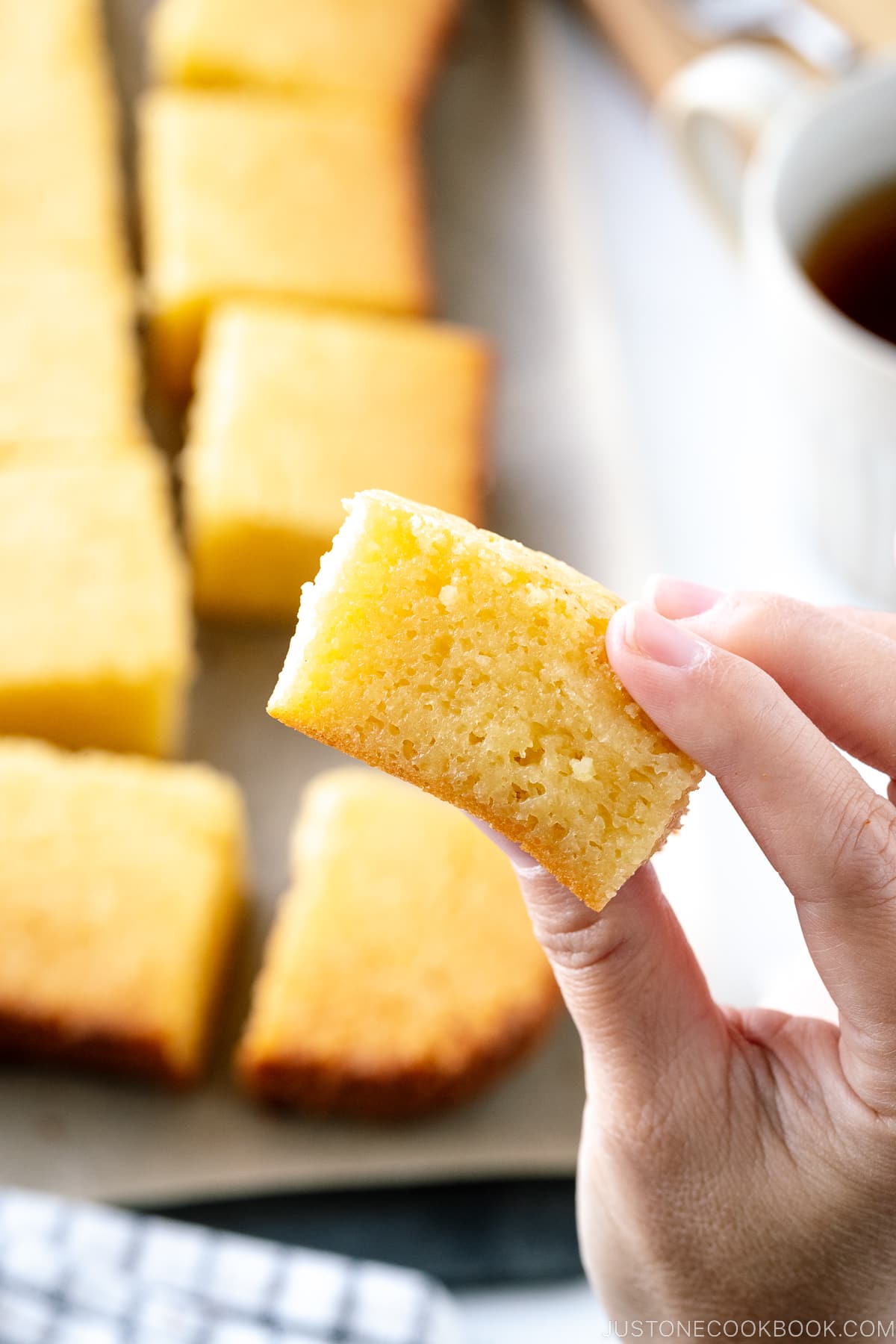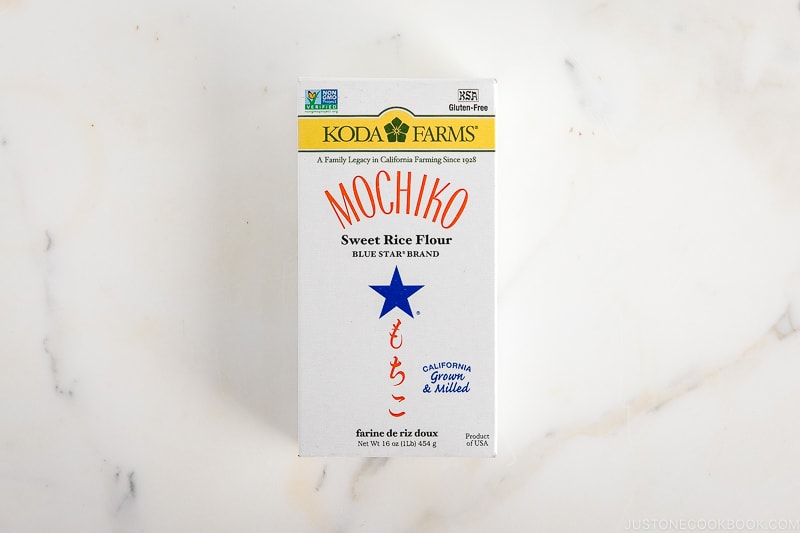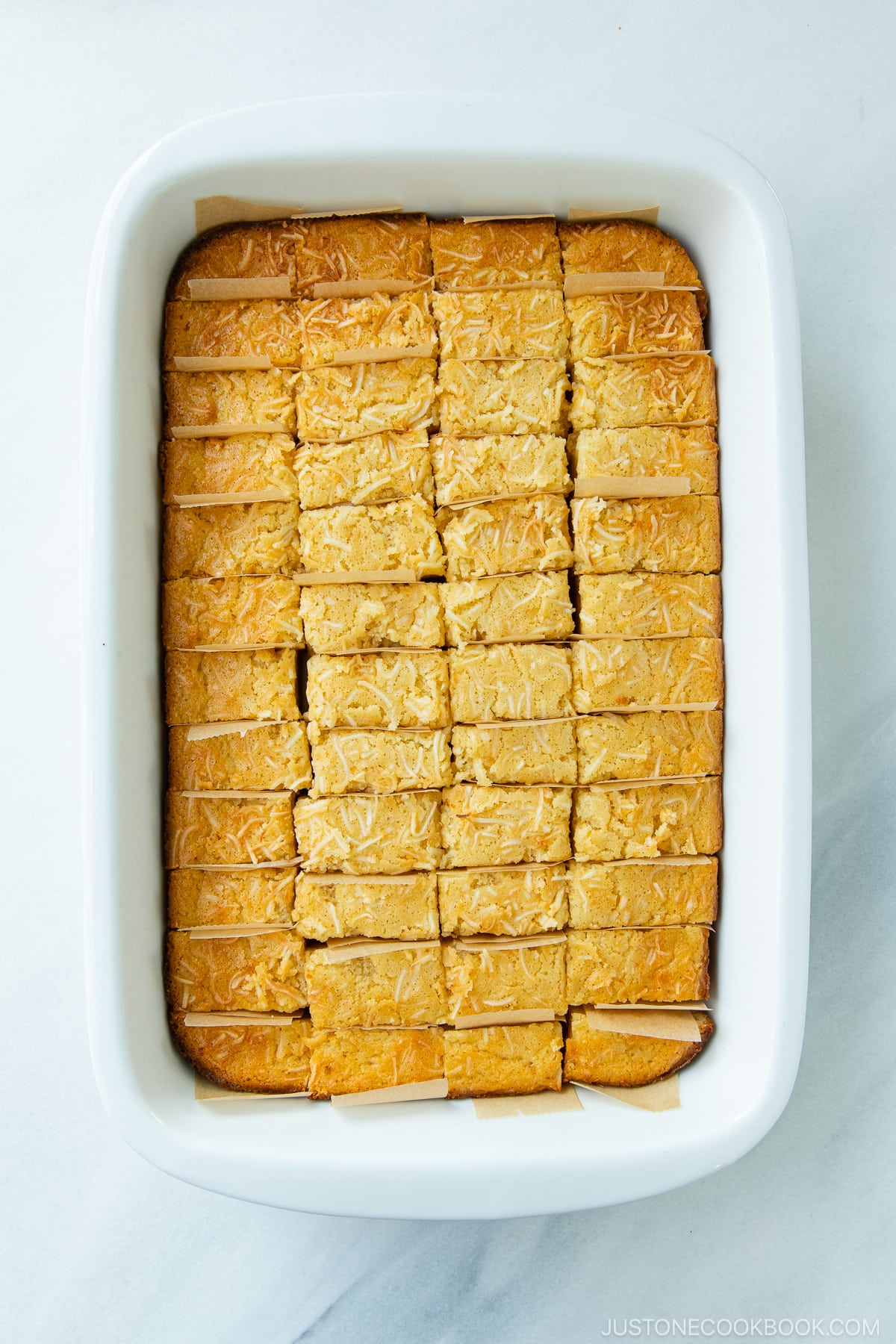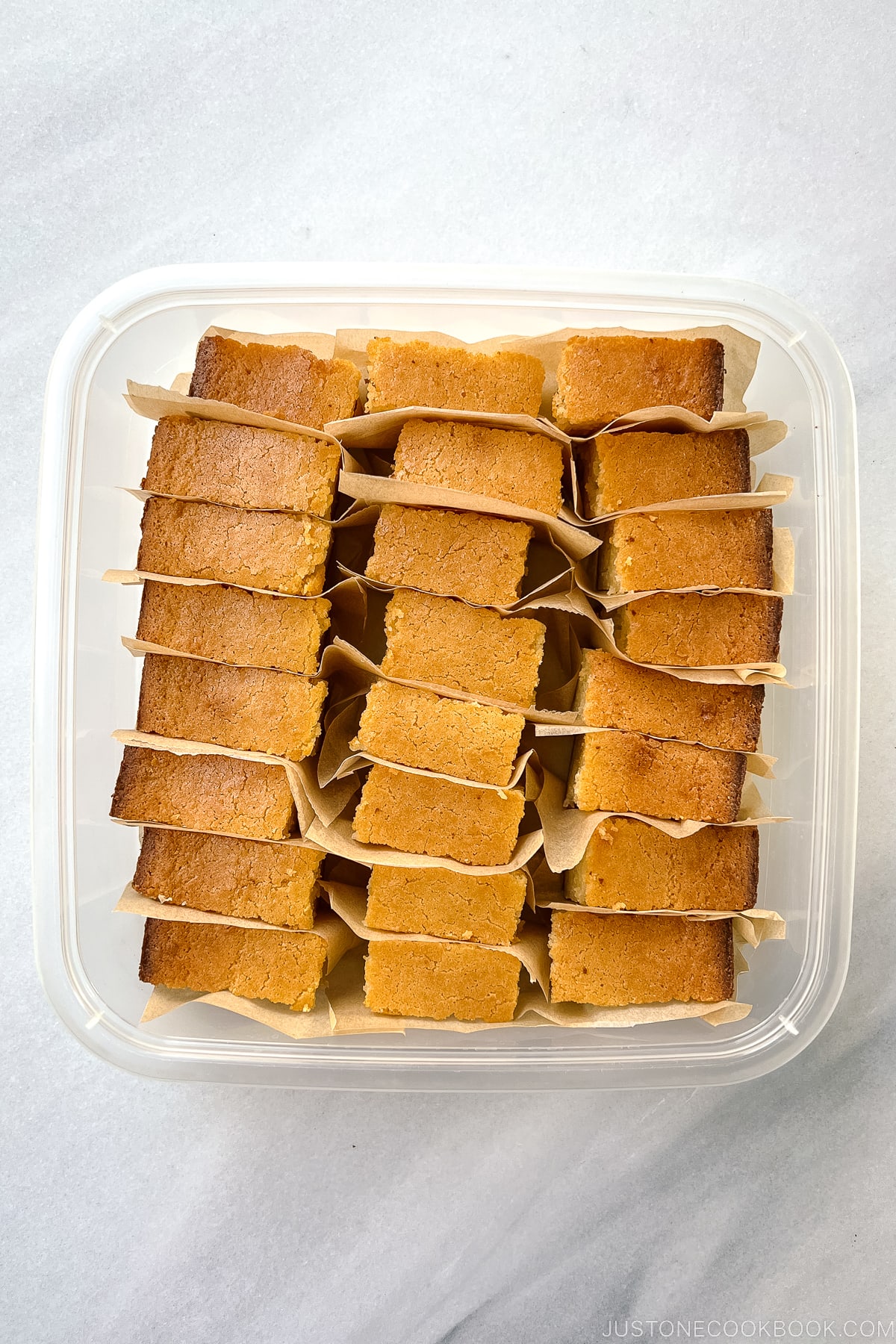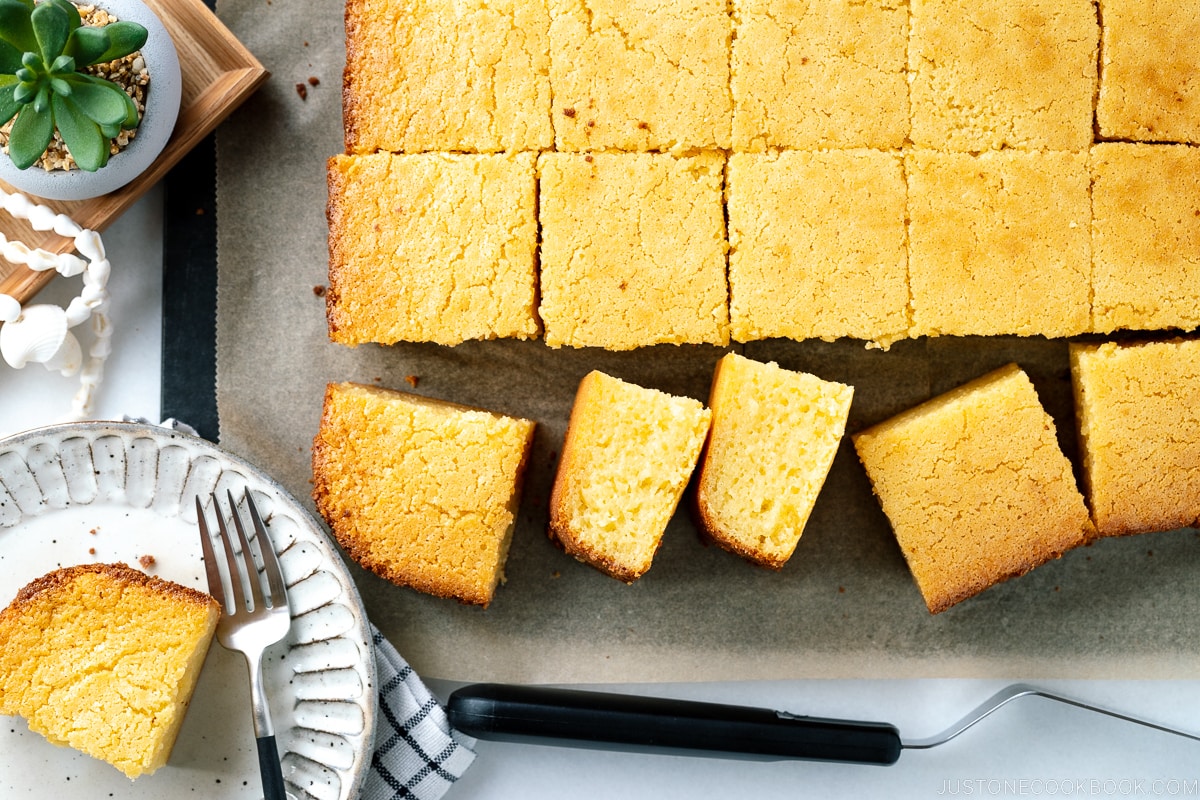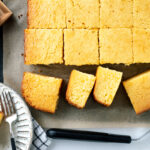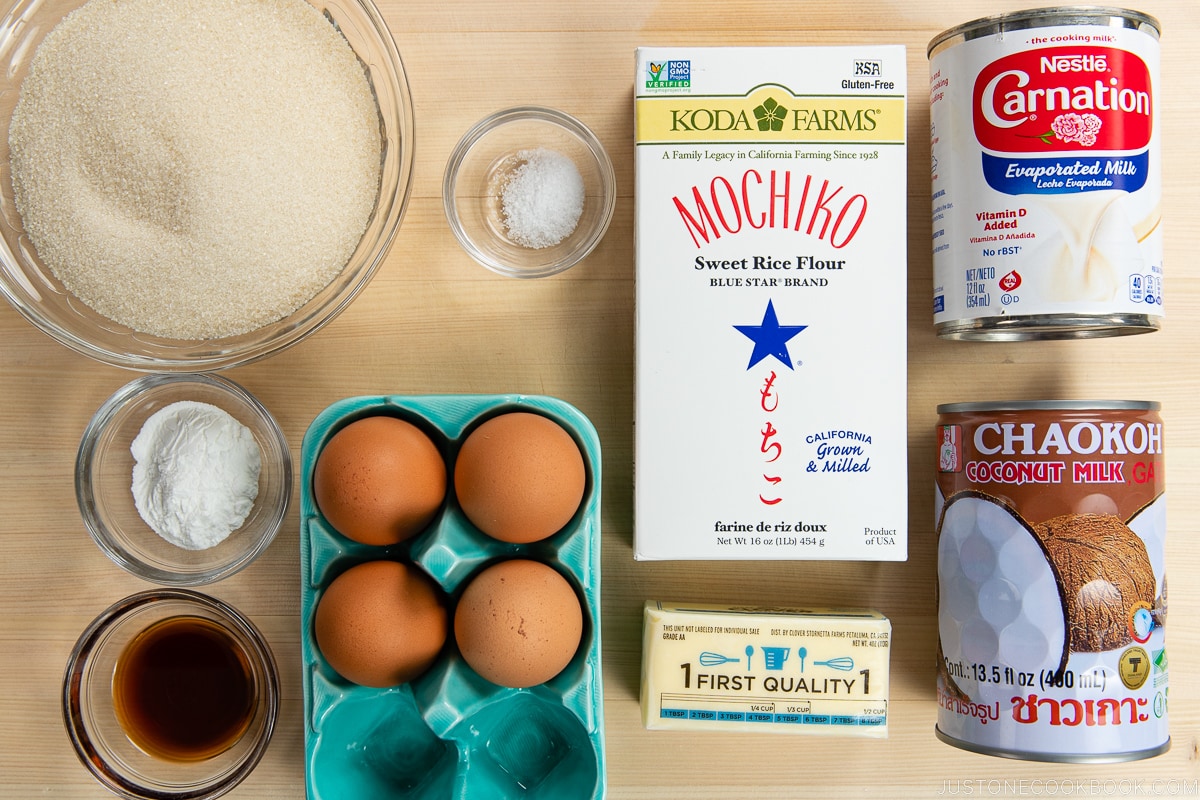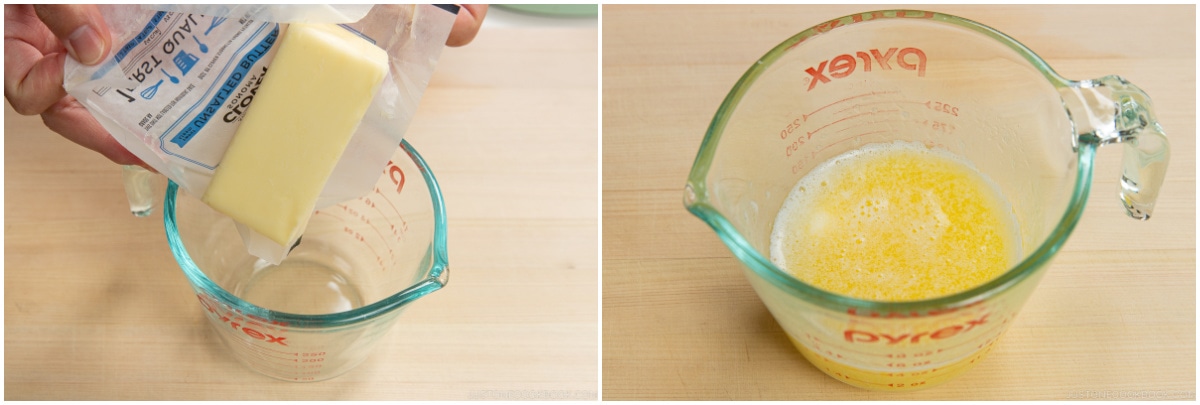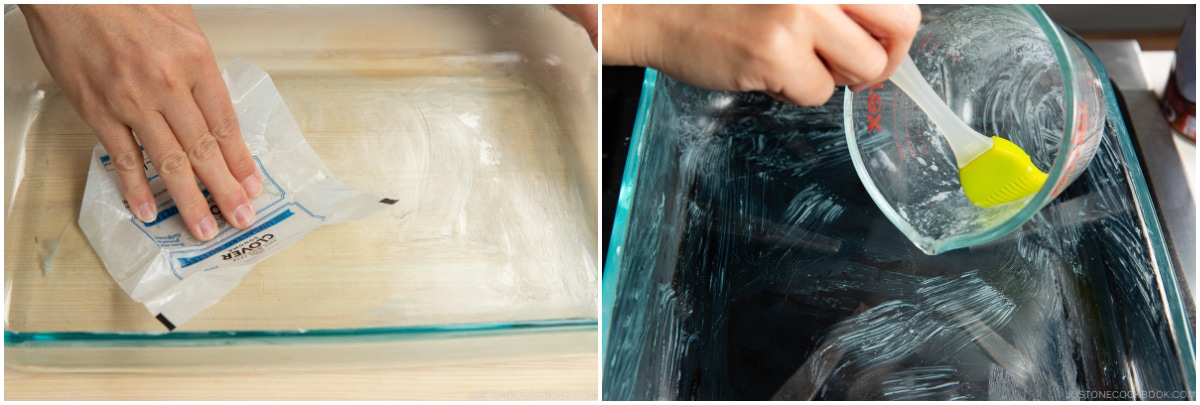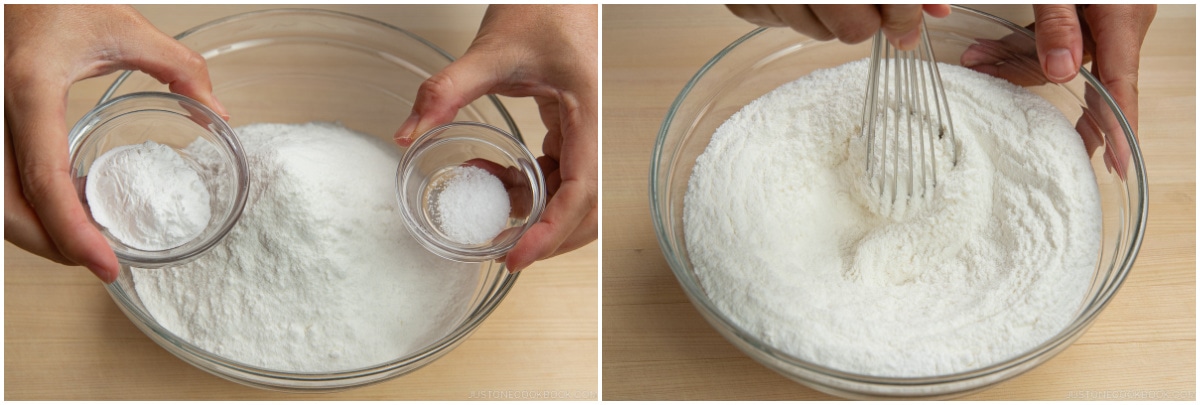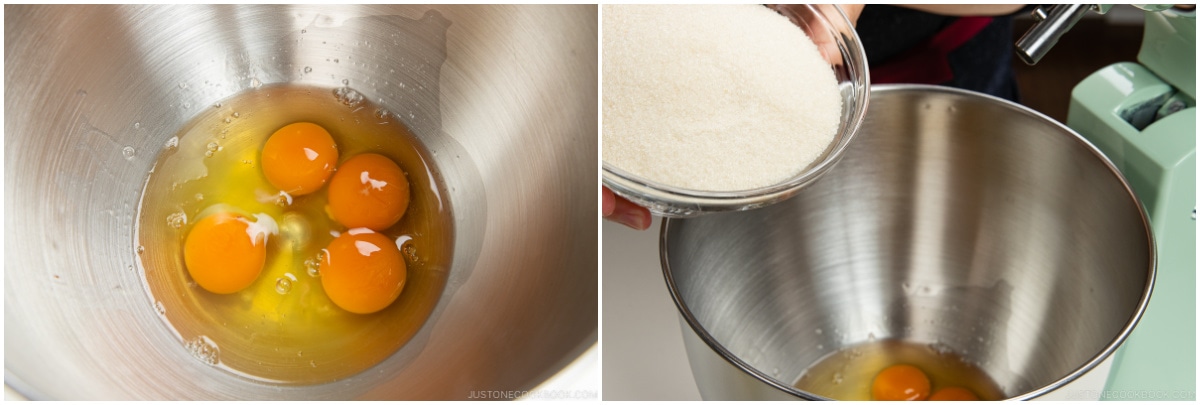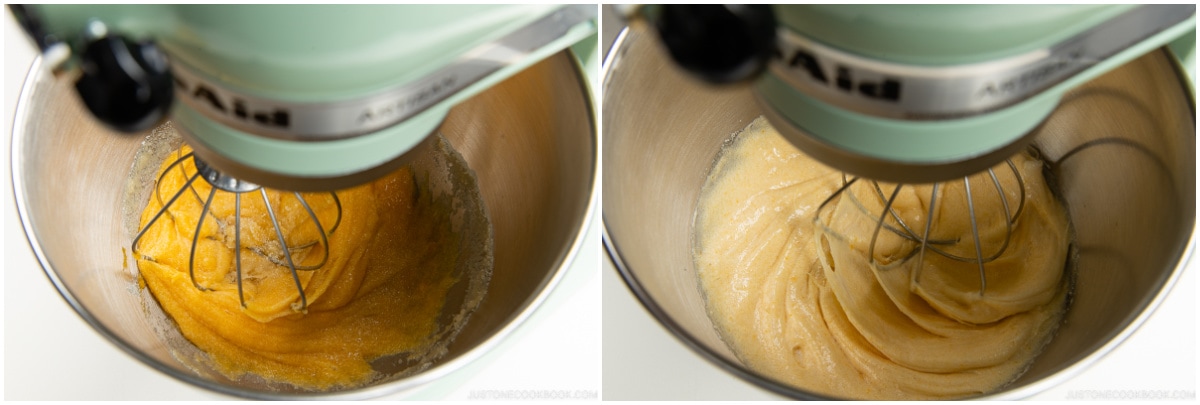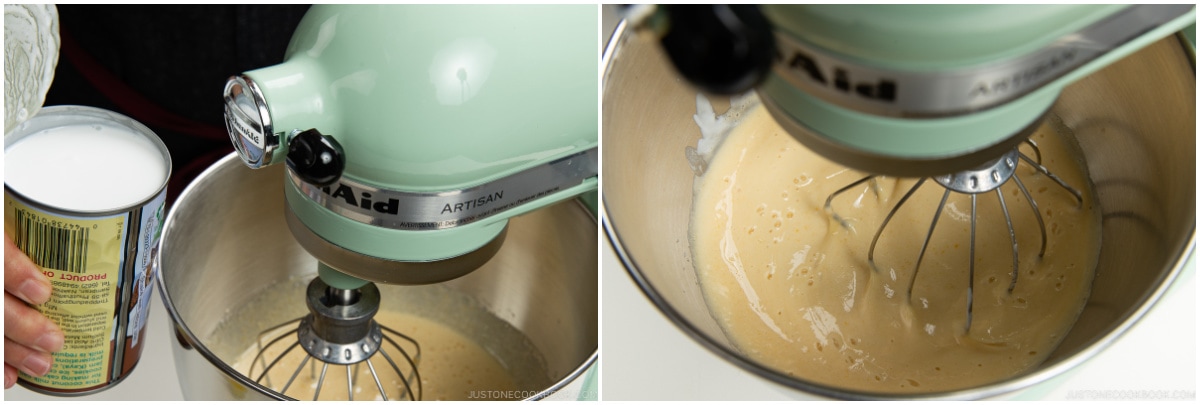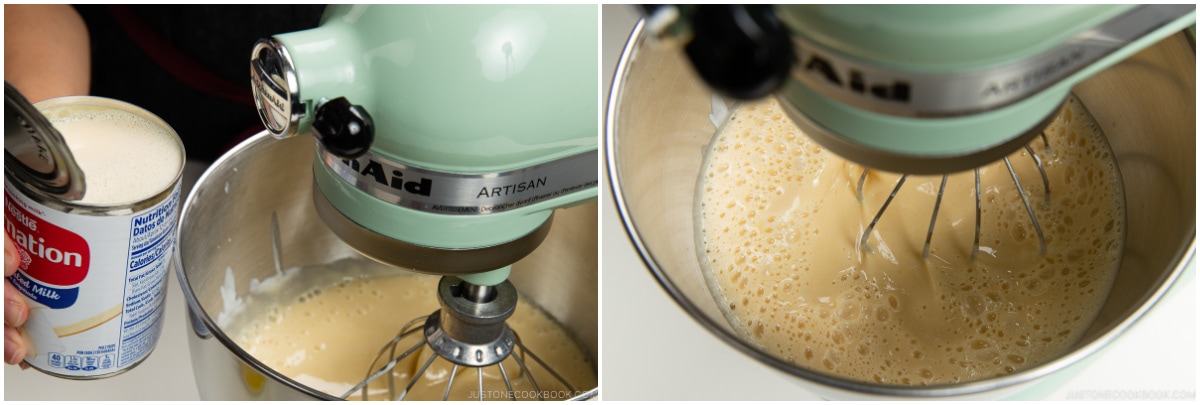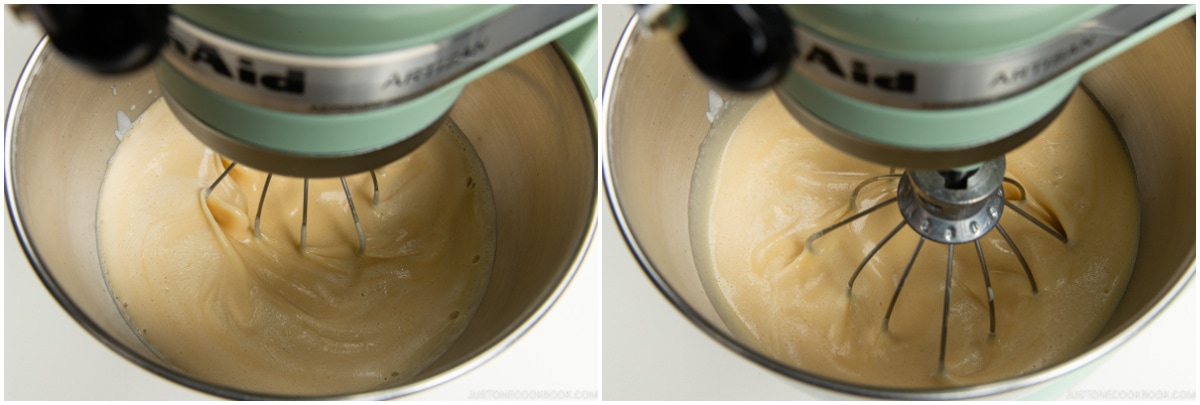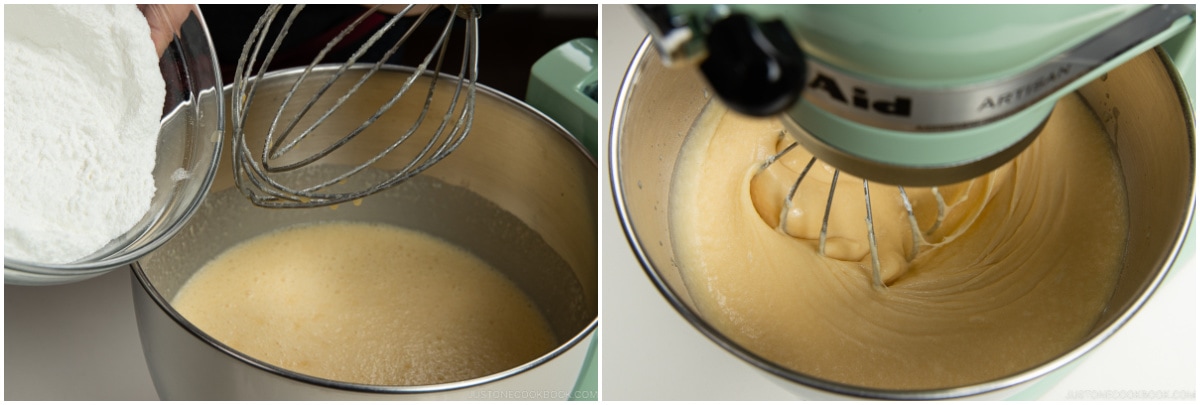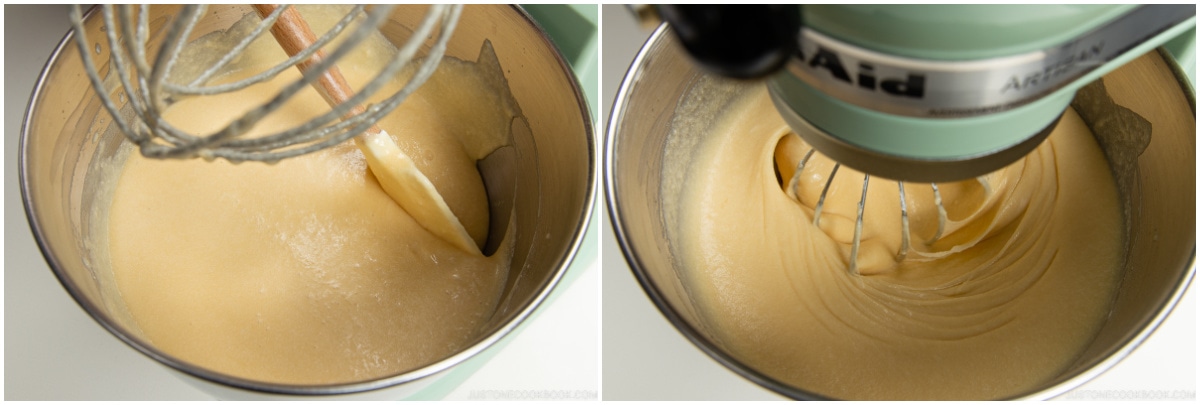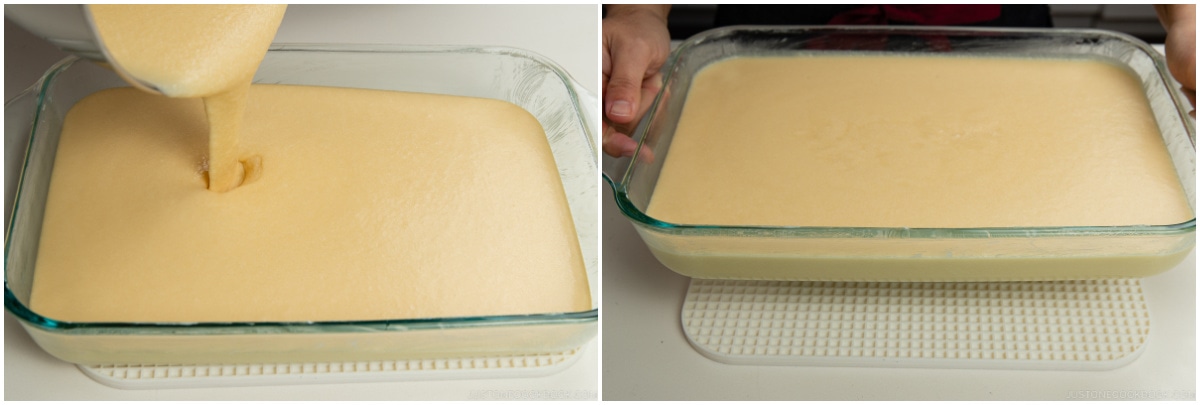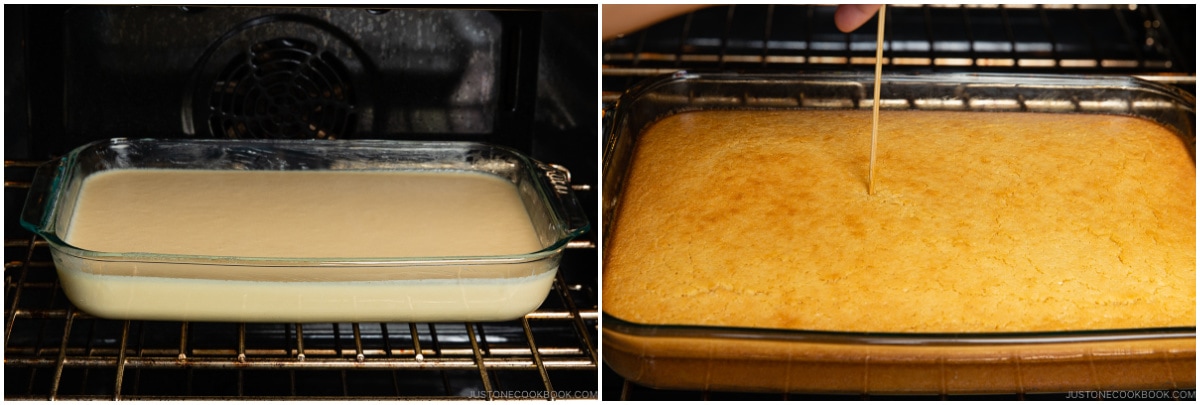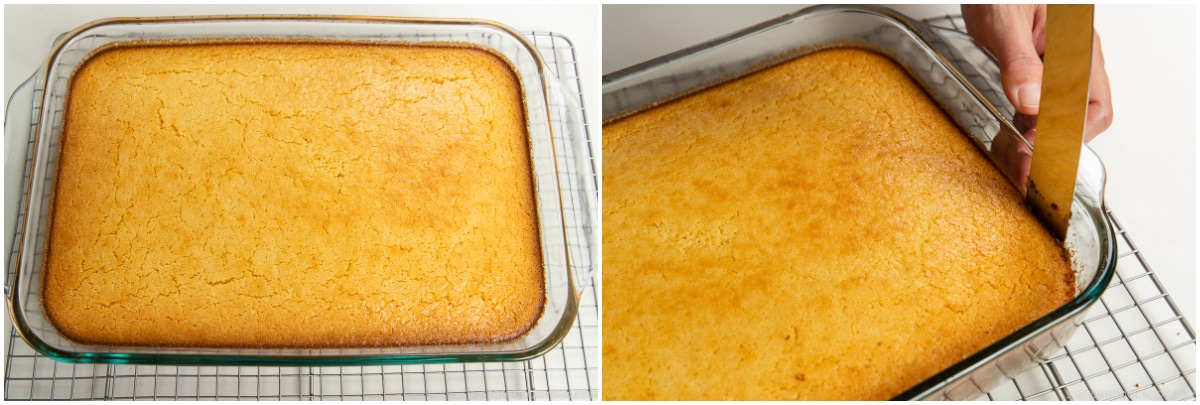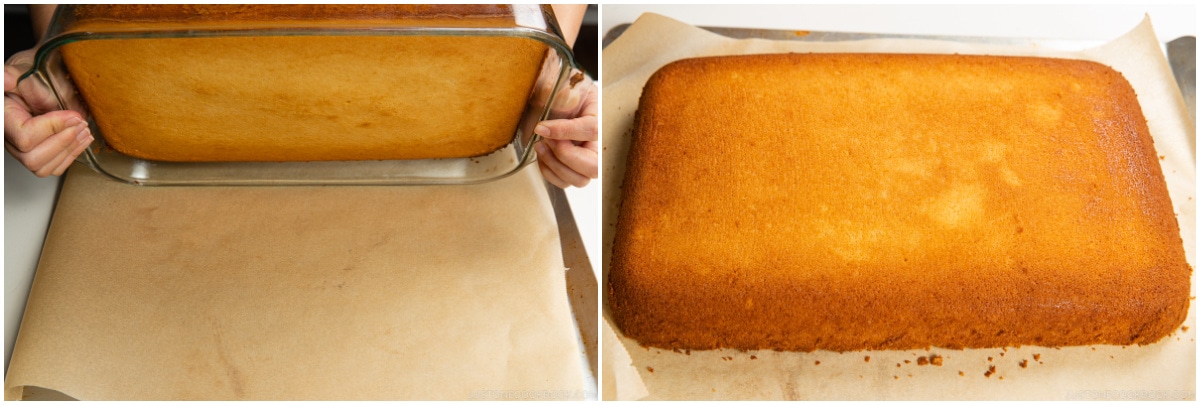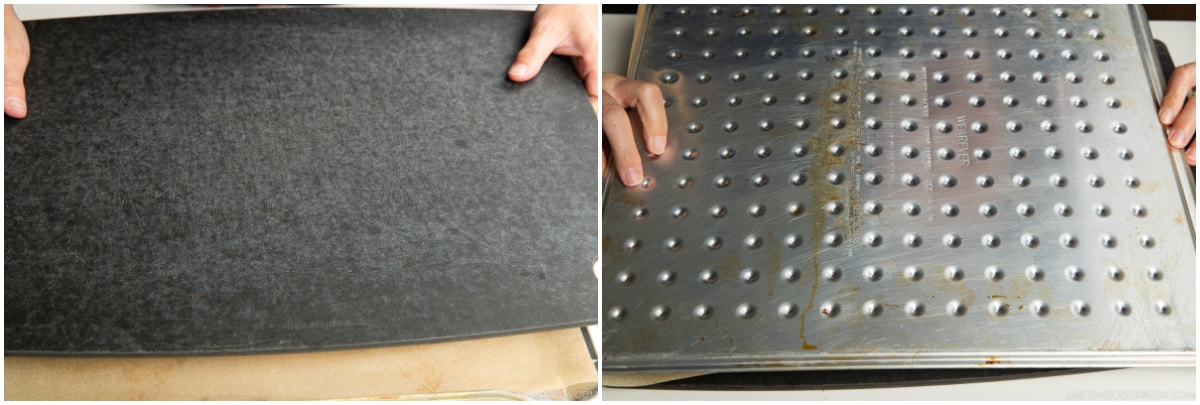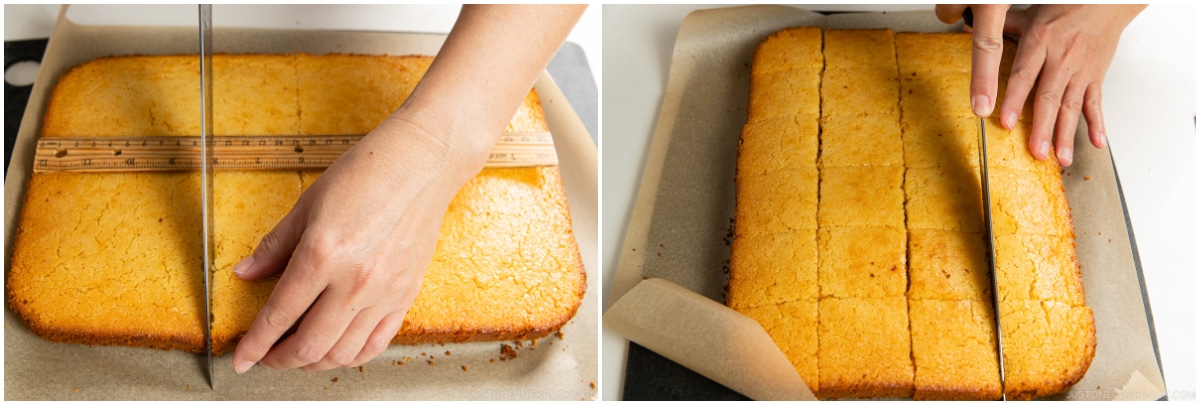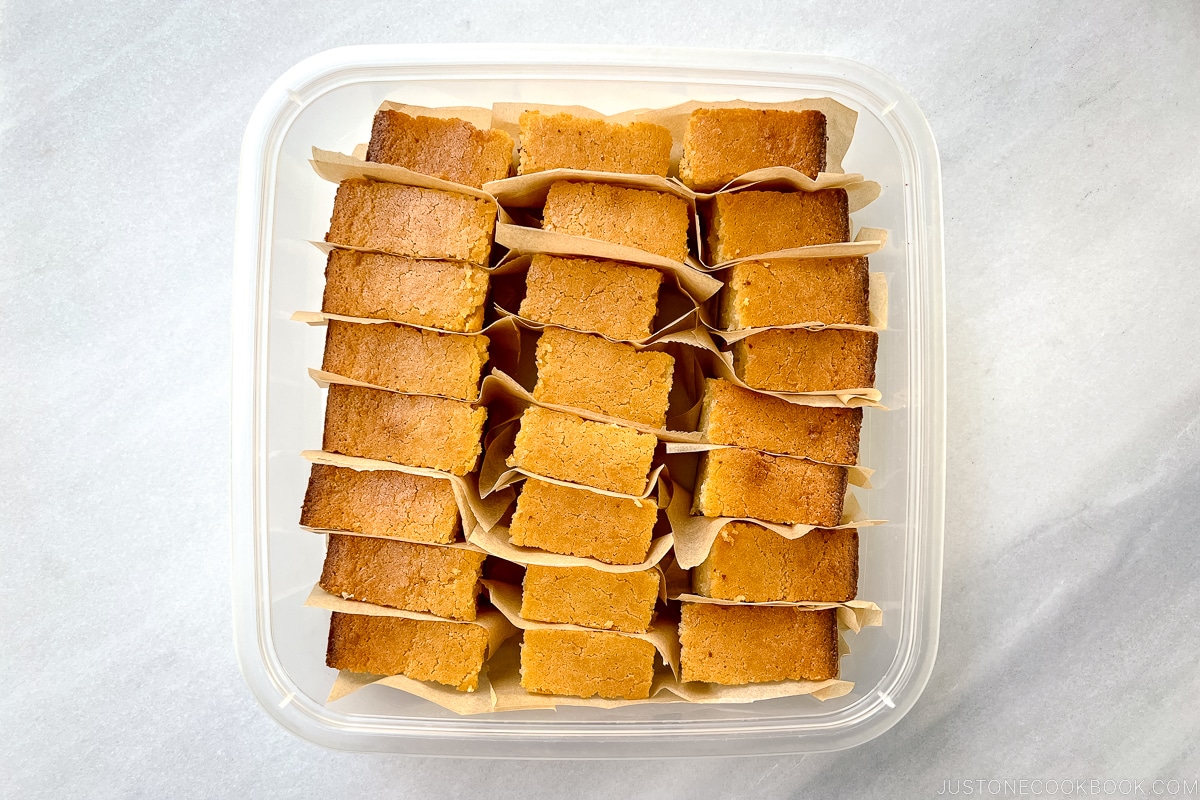Crisp caramelized edges, chewy and gooey in the middle with fragrant coconut flavor, butter mochi is one of the most popular desserts in Hawaii. It’s a sort of hybrid dessert combining Japanese mochi with local coconut cake. My family has enjoyed our fair share of butter mochi—from Shueido, a Japanese confectionery store in San Jose, to souvenirs from Hawaii to Naomi’s homemade one (she’s a JOC team member). Today I’m sharing our family’s favorite version. It’s rich but not too sweet with subtle hints of vanilla, butter, and coconut. The interior is wonderfully chewy and the crust is addictively crispy. If you love a sweet treat and all things mochi, you have to make this!
What is Butter Mochi?
Butter mochi is a favorite local Hawaiian sweet made of butter, mochiko flour, coconut milk and some kind of other milk (evaporated or whole milk). It’s pretty much a coconut custard glutinous rice cake that is chewy and slightly sticky on the inside and crispy on the outside. Baked in a pan and cut into squares, butter mochi may look plain but it’s a true staple dessert in Hawaii. The locals would serve it at potlucks, parties, or any gatherings. Like many things in Hawaii, it can be difficult to trace the exact origins of butter mochi, but it is certainly a result of many layers of cultural influences. Some claim that it is based on a bibingka, a Filipino coconut rice cake, and another popular Hawaiian sweet, chichi dango (乳団子), which was originally from Hiroshima. Butter mochi started getting more popular even outside of Hawaii, and now you can find a pre-mix box version at Trader Joe’s in the US. It’s a simple dessert but that’s the allure of it.
The Recipe Inspiration
Since butter mochi is not something I grew up eating, I had to do a bit of tinkering to achieve the perfect one that gets the final votes from my family. I started by researching online and creating a spreadsheet to compare everyone’s ingredients, just like how I did with my Furikake Chex Mix. Soon I realized that all the top ten recipes have the same ingredients with a slight difference in amount, so it was all about finding the right ratios that suit our taste. I think my kids loved this recipe testing stage more than any other tests I’ve done. After I’ve done 8 different trials in total, we all agree this final version was the best. Luckily, my neighbors enjoyed the multiple butter mochi drop-offs. You’d find that most recipes say it only last for 3 days, but I’ve also tested freezing my butter mochi and it tastes just as amazing after defrosting and microwaving to warm it up a little. Just like any other home cooking, it’s really up to you how you and your family enjoy it. Experiment with what you like, and use the recipe I share today as a base and adjust from there.
How to Make Butter Mochi
Ingredients You’ll Need
Unsalted butter Mochiko (glutinous rice flour) – I’ll talk more about this ingredient below. Baking powder Salt Eggs Sugar Unsweetened coconut milk Evaporated milk Vanilla extract
As you see above, ingredients for this recipe are all pantry-friendly. If you have butter and eggs, you can make this any time! If you have an unexpected guest over, butter mochi is a great dessert to make, especially when you serve it warm.
Overview: Cooking Steps
What is Mochiko?
Mochiko (餅粉, もちこ) is a fine white gluten-free flour made of glutinous/sweet rice. It’s an ingredient in wagashi (Japanese traditional sweets), such as daifuku mochi, yatsuhashi, senbei rice crackers, and dango. It’s also used in Korean desserts, Filipino bibingka-style confections, and some Chinese dim sum dumplings. In Hawaiian cuisine, it’s used as a coating for mochiko chicken, butter mochi, chi-chi-dango, and cakes. Mochiko from Koda Farms is most well-known product in the U.S. and can be found in Japanese, Asian, and well-stocked American grocery stores.
Butter Mochi Toppings
I highly recommend sprinkling unsweetened coconut flakes on top of the batter before baking. You could also add them to the batter and mix them all up.
Butter Mochi Tips
Thoroughly grease the baking pan. This will help to achieve clean-cut pieces when you slice the cake. I love the buttery crispy crust (they are all mine!) so I take it seriously. If the butter wrapping has some residual butter, use it to grease the pan. You can also use the leftover in the bowl/measuring cup after melting the butter for greasing. No waste! Mix until no lumps! No need to worry about overmixing! Since mochiko (glutinous rice flour) is not wheat flour, we don’t have to worry about overmixing this batter. For crispy edges and a chewy center, bake at 375ºF (190ºC) for 45 minutes. I should mention that every oven is different (size, gas/electric, etc), so you may want to test and adjust. A lot of recipes online suggest baking at 350ºF (177ºC) while only a few suggest 375ºF. I personally like to bake mine at 375ºF for 45 minutes for crispy edges and a chewy center. Make sure an inserted skewer comes out clean.
Can I make this recipe in two 8×8-inch baking pans?
Yes, you can either use two 8×8-inch baking pans or cut the recipe ingredients in half to make one 8×8-inch baking pan.
How can I make a small portion?
I know you’d ask because I used to think the same! I used to make one 8×8-inch pan. Then, I realized that I preferred to empty out the entire box of mochiko and two cans (coconut and evaporated milk) instead of keeping the half. I don’t use these ingredients for other recipes. If you do, please feel free to make half portion! So for those of you who feel this portion is too much, may I suggest:
Give half of freshly baked butter mochi to neighbors, friends, and family. They will love you and wait for your next delivery of butter mochi! Enjoy the quarter for yourself and family (next 3 days). Freeze the rest when the butter mochi is completely cooled. See below.
Can I freeze the butter mochi?
Yes, I highly recommend freezing on day 1 (don’t wait till day 3) while the butter mochi is fresh! Wrap each piece in plastic to avoid freezer burn, drying, and sticking. Then, place them in a freezer bag or airtight container and freeze them for up to 1 month (for better taste) to 2 months (I think it still tastes ok). Thaw overnight in the refrigerator or at room temperature. Microwave for 5-10 seconds before serving. I miss eating butter mochi once in a while. It’s really nice to be able to enjoy a few pieces with my afternoon tea!
Can I use other types of milk instead of evaporated milk?
Yes! As I explained in my post earlier, many recipes online use whole or reduced milk to make butter mochi instead of evaporated milk. Evaporated milk makes the batter creamier and thicker than regular whole milk. We don’t keep whole milk in my house so I like using evaporated milk for this recipe as I can keep one can of both evaporated milk and coconut milk in my pantry all the time, and when I feel like I want to make butter mochi, I can quickly make it. If you’re from Hawaii and have a family recipe that you’d like to share, please do so in the comment below. Wish to learn more about Japanese cooking? Sign up for our free newsletter to receive cooking tips & recipe updates! And stay in touch with me on Facebook, Pinterest, YouTube, and Instagram.
